In the 1920s, men's tie clips became essential accessories, blending practicality with high fashion. As ties grew heavier, these clips offered a stylish solution, gaining popularity among both civilians and military officers. Crafted from metal alloys like gold and silver, their designs often featured Art Deco motifs and geometric shapes, showcasing meticulous craftsmanship. Icons like Fred Astaire defined elegance, making tie clips a symbol of social status and personal style. Their significance went beyond mere utility, marking a shift in men's fashion that still resonates today. Discover how this accessory's impact has evolved over the decades.
Historical Context of Tie Clips

The emergence of tie clips in the 1920s marked a significant evolution in men's fashion, reflecting broader societal changes and a shift towards practicality. In the aftermath of World War One, men sought a more refined yet functional approach to their attire. As heavier fabric ties became popular, the earlier tie pin proved inadequate, prompting the need for a more effective solution. Tie clips emerged as a practical accessory, securing ties in place while offering a streamlined appearance.
The adoption of tie clips by British military officers during the war further propelled their acceptance in civilian fashion. This military influence not only lent an air of sophistication but also symbolized a modern, organized approach to dressing. As the 1920s progressed, various styles and materials for tie clips began to surface, showcasing the era's commitment to elegance in men's fashion.
Design Trends and Materials
As the 1920s progressed, tie clips not only fulfilled a functional role but also became a canvas for artistic expression in men's fashion. These accessories reflected a blend of practicality and style, securing wider neckties while enhancing overall attire. The materials used in tie clips were typically metal alloys, often plated with gold or silver, adding an elegant touch that complemented the heavier fabrics popular during this period. This era also saw an increase in the popularity of vintage clothing, with items like vintage clothing labels becoming sought after by fashion enthusiasts.
You might envision the design trends of the era as follows:
- Geometric Shapes: Tie clips featured sharp lines and angles, embodying the modernist spirit of the decade.
- Art Deco Patterns: Intricate motifs, inspired by the broader Art Deco movement, adorned many clips, showcasing a vibrant aesthetic.
- Handcrafted Details: Skilled artisans created unique pieces with engraving and enameling, adding personal flair to each tie clip.
This evolution from traditional tie pins to flatter, more stylish tie clips marked a significant shift in men's fashion. The combination of sophisticated materials and artistic designs transformed these functional accessories into essential elements of a well-dressed man's wardrobe.
Influential Figures and Styles
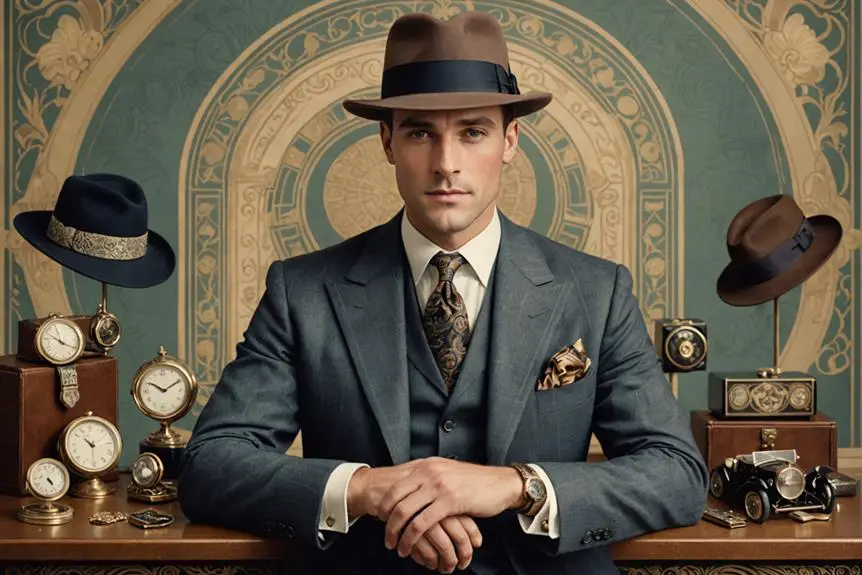
Influenced by the glamour of Hollywood and the sophistication of elite social circles, tie clips became synonymous with the refined style of the 1920s. As heavier fabric ties emerged, the flat lay of these accessories made tie clips a practical choice, replacing the less effective tie pin. You can see the allure of tie clips embodied in influential figures like Fred Astaire and the suave character of James Bond, who epitomized elegance and sophistication. Their style choices elevated the tie clip from mere functionality to a symbol of class.
During this decade, tie clips also found their place in British Military Officer Uniforms, underscoring their significance in formal attire. The craftsmanship of tie clips was remarkable, showcasing die-struck designs and hand-enameling that appealed to the aesthetic sensibilities of the time. You'd notice that many designs featured geometric patterns, reflecting the Art Deco movement that defined broader fashion trends. These elements combined to create not just an accessory, but a statement piece that communicated refinement and style. In the 1920s, wearing a tie clip became an essential part of a well-dressed man's wardrobe, solidifying its status as a timeless accessory.
Social Significance and Symbolism
Elegance and refinement seamlessly intertwined in the social fabric of the 1920s, where tie clips emerged not just as functional accessories, but as powerful symbols of personal style and status. As ties grew wider and heavier, these clips offered a solution while conveying a man's attention to detail. Their significance transcended mere utility, marking the wearer as someone who understood the nuances of fashion. The craftsmanship and unique designs of that era can be likened to the artistry found in vintage clothing labels, which often reflect the historical context and creativity of the time.
Consider the imagery of the era:
- A British military officer, tie clip shining, exuding professionalism and authority.
- A Hollywood star, effortlessly charming, sporting a unique design that reflected his individuality.
- A businessman in a bustling café, his tie clip embodying sophistication, setting him apart from the crowd.
These examples illustrate how tie clips became a canvas for personal expression. They evolved from a practical tool to a statement piece of individuality and social standing. The designs varied, mirroring the wearer's taste and aspirations, making the tie clip an essential part of the 1920s man's wardrobe. In that vibrant decade, wearing a tie clip wasn't just about holding a tie in place; it was about making a statement in society.
Legacy and Modern Relevance
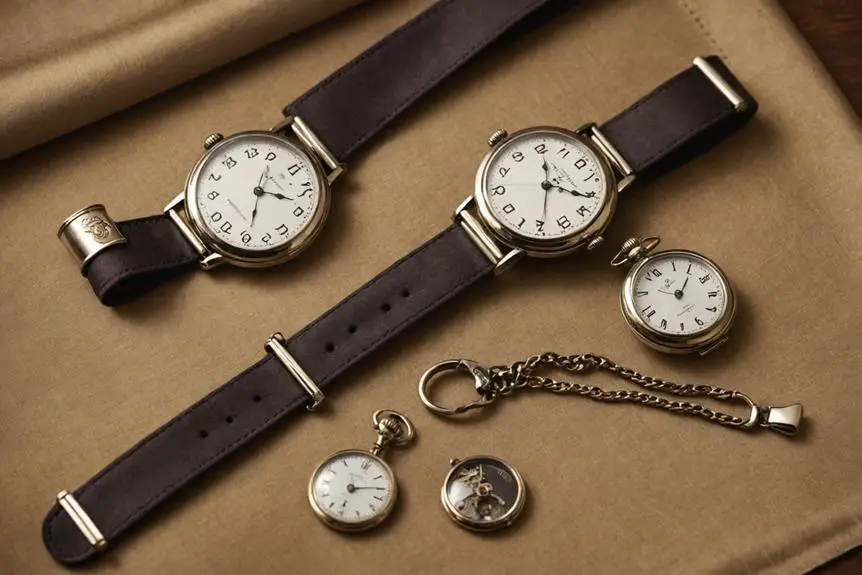
The impact of 1920s tie clips extends far beyond their initial purpose as functional accessories. They not only secured ties but also became an emblem of style and craftsmanship. As heavier fabrics gained popularity, tie clips evolved from mere practicality to crucial components of men's fashion, especially among British military officers during World War I. With intricate designs and a nod to elegance, they captured the eye of fashion icons like Fred Astaire and even the fictional James Bond, solidifying their status.
Today, the legacy of these accessories is still palpable in modern fashion. You'll find tie clips adorning both formal and casual outfits, maintaining their relevance as essential style elements. To illustrate their evolution and importance, consider the following table:
| Aspect | 1920s Tie Clips |
|---|---|
| Initial Purpose | Secure ties against wind |
| Popularity | Gained traction in fashion |
| Design Innovation | Die-struck and hand-enamelled |
| Cultural Influence | Icons like Astaire, Bond |
| Modern Relevance | Crucial for various outfits |
This table underscores how tie clips have transcended time, continuing to symbolize sophistication and style.
Frequently Asked Questions
When Did Men Start Wearing Tie Clips?
You'll find that men started wearing tie clips in the early 20th century, primarily for practicality. Their adoption reflected evolving fashion trends, where functionality met style, making them a staple accessory in men's wardrobes.
What Did Ties Look Like in the 1920s?
Ties in the 1920s were wider, often crafted from silk, wool, or cotton, featuring bold patterns like stripes and paisleys. Their designs reflected Art Deco influences, showcasing geometric shapes and intricate craftsmanship, essential for both casual and formal looks.
What Was the Tie Knot in the 1920s?
In the 1920s, you'd likely choose the Four-in-Hand knot for its easy charm, or the Windsor knot for a more polished look. Bow ties also gained popularity, showcasing unique styles among artists and intellectuals.
Do Men Use Tie Clips Anymore?
Yes, you still see men using tie clips today. They serve both functional and stylish purposes, keeping ties in place while adding flair. With various designs available, they're perfect for personal expression in modern menswear.
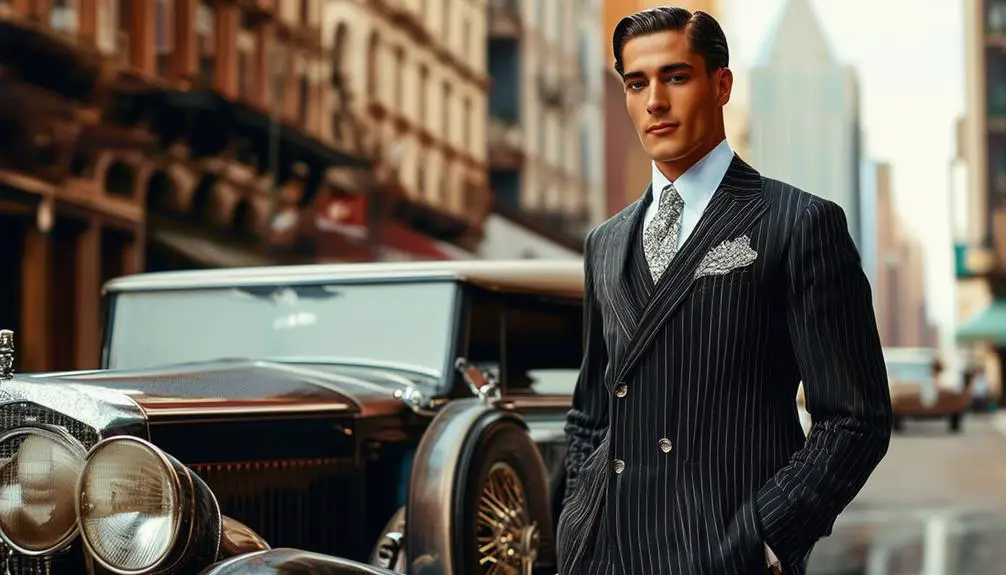

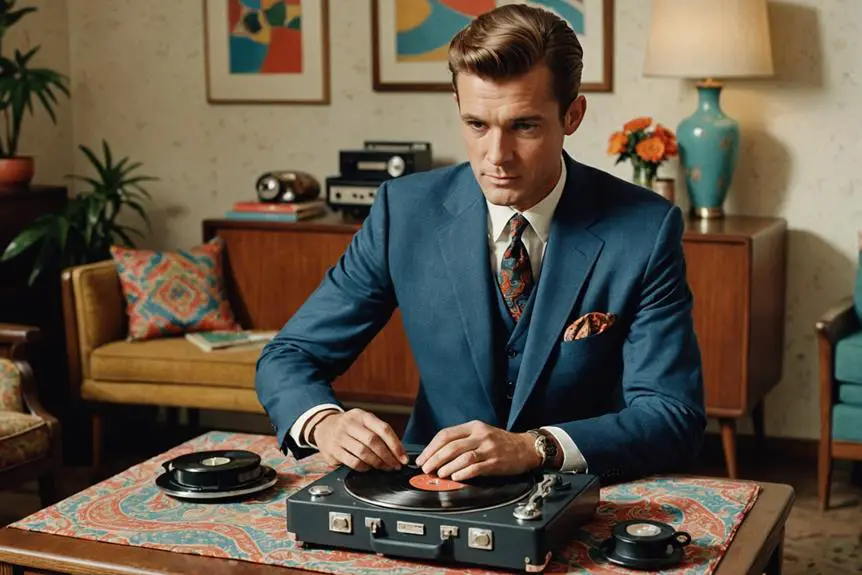

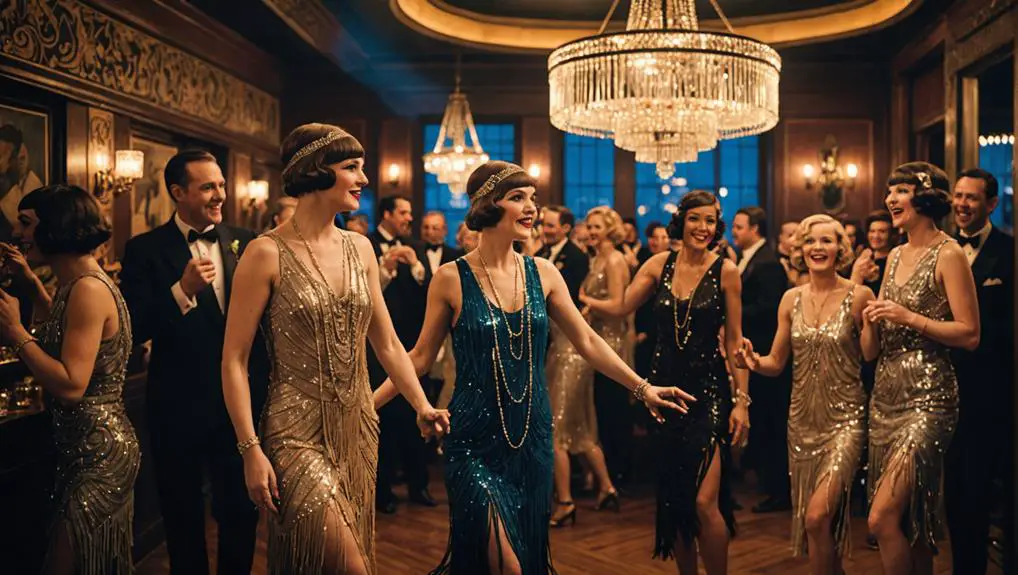
you have brought up a very good details , thanks for the post.